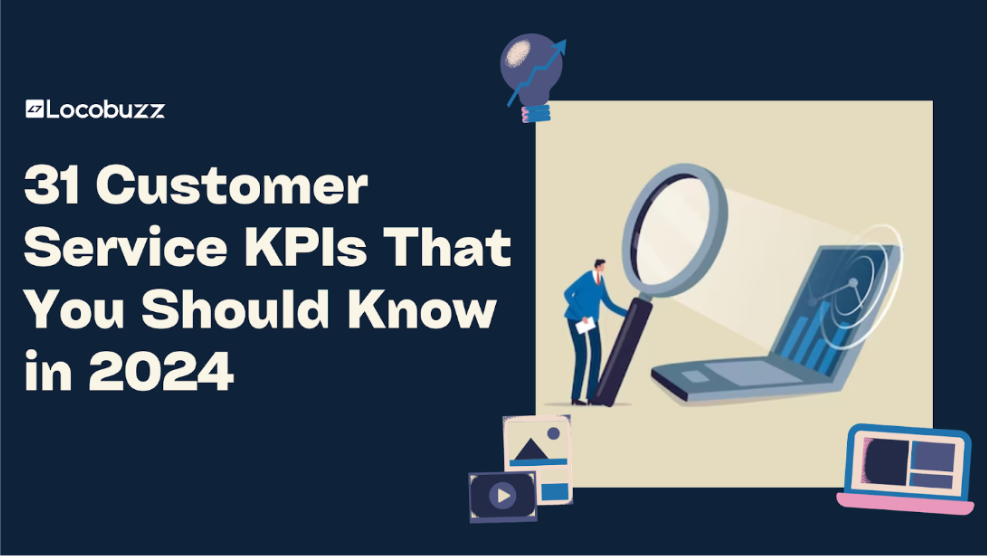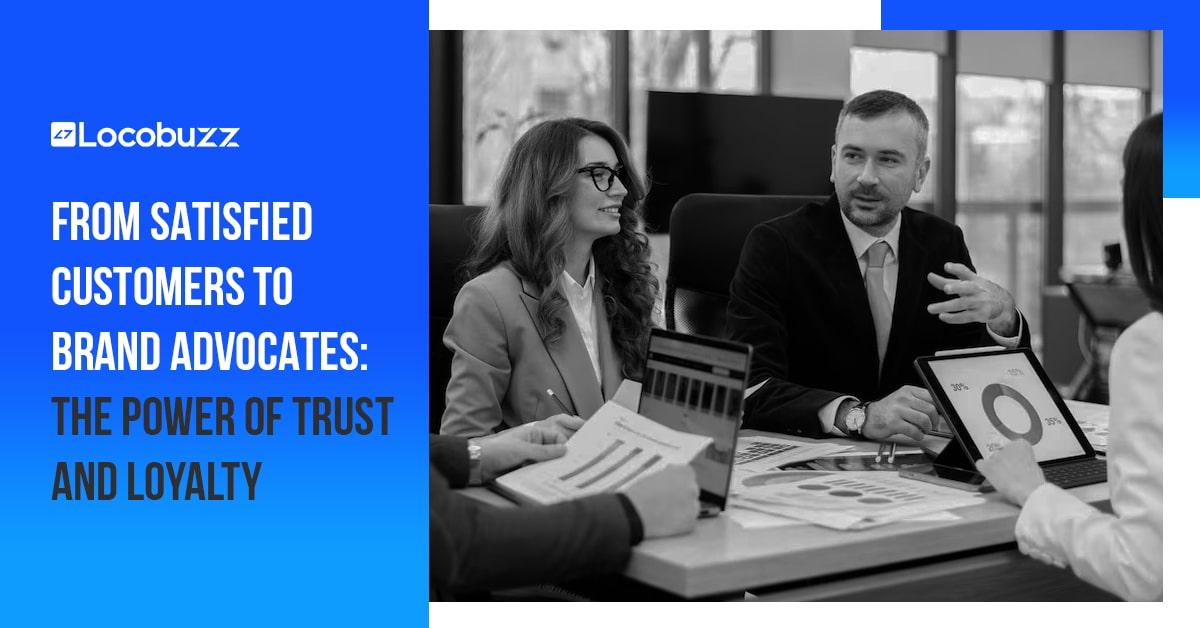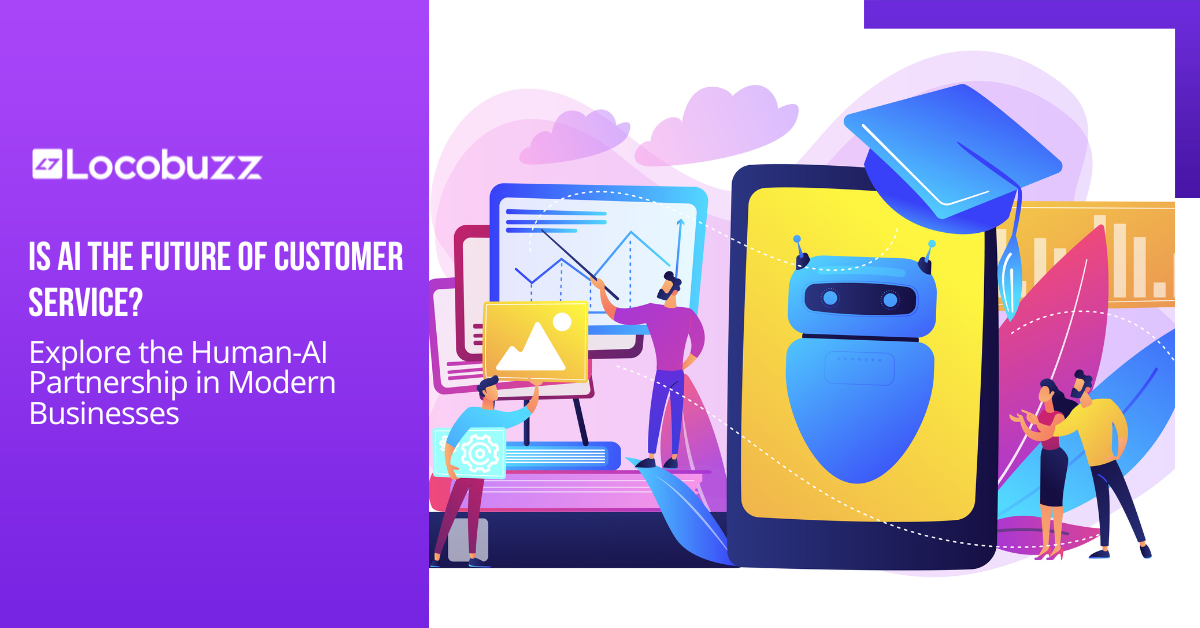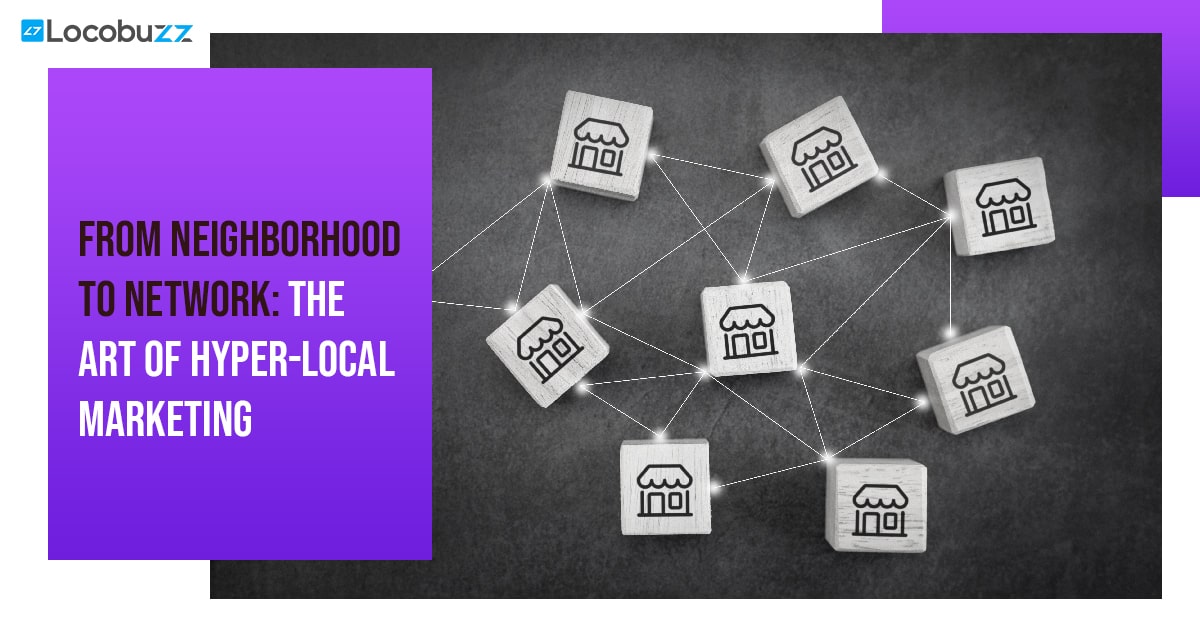31 Customer Service KPIs That You Should Know in 2024

What is Customer Service KPIs/Metrics?
List of Customer Service KPIs
Table of Contents
1. CSAT (Customer Satisfaction Score)
Definition:
CSAT quantifies customer satisfaction following interactions with a company’s products or services, typically assessed via post-interaction surveys or feedback. It offers insight into customer perceptions, aiding in identifying service strengths and areas needing improvement. This KPI is pivotal in understanding customer sentiments, thereby assisting in enhancing overall service quality and fostering long-term loyalty and retention.
Mistakes to Avoid:
- Neglecting Negative Feedback: Ignoring or dismissing negative feedback can lead to recurring issues and dissatisfied customers.
- Using Vague Surveys: Crafting ambiguous or general survey questions might not yield actionable insights.
Tips and Tricks:
- Personalized Follow-ups: Implement personalized follow-ups after interactions to show care and boost satisfaction.
- Prompt Issue Resolution: Resolve customer issues within a quick turnaround time, ideally within 24 hours.
Case Study/Example:
Real-Life Application Amazon: Amazon significantly improved its CSAT score by 20% over six months by introducing personalized follow-ups post-purchase, addressing specific customer concerns, and providing swift resolutions to reported issues. This approach not only enhanced customer satisfaction but also reduced return rates by 15% over the same period.
2. NPS (Net Promoter Score)
Definition:
NPS evaluates customer loyalty and advocacy by classifying customers as promoters, passives, or detractors based on the likelihood of recommending a company’s offerings. It provides a clear metric for gauging customer satisfaction and loyalty trends over time. By identifying brand advocates and detractors, companies can strategize to reinforce positive experiences and address concerns proactively, fostering a loyal customer base and promoting brand advocacy.
Mistakes to Avoid:
- Focusing Solely on the Score: Relying only on the NPS number without understanding the reasons behind the scores can hinder improvement efforts.
- Ignoring Detractors: Neglecting to engage with detractors (customers who give low scores) can lead to missed opportunities for improvement.
Tips and Tricks:
- Incentivizing Feedback: Offer incentives for completing surveys to encourage participation and gain more comprehensive insights.
- Referral Programs: Implement referral programs to turn satisfied customers into brand advocates, boosting NPS and customer acquisition.
Case Study/Example:
Real-Life Application Tesla: Tesla witnessed a 35% increase in its NPS within three months of launching a referral program. By encouraging existing customers to refer new ones and rewarding both parties, they not only increased their NPS but also saw a 25% surge in new customer purchases, demonstrating the program’s success.
These examples highlight how specific strategies applied by renowned companies led to notable improvements in their customer satisfaction and loyalty metrics, showcasing the real-life impact of these KPIs.
3. CES (Customer Effort Score)
Definition:
CES gauges the ease with which customers resolve issues or accomplish tasks when interacting with a company’s support channels. This KPI emphasizes reducing customer effort, aiming for seamless experiences by streamlining processes and systems. Lower CES values imply a smoother customer journey, contributing to higher satisfaction, loyalty, and improved brand perception.
Mistakes to Avoid:
- Complexity in Resolutions: Complicating issue resolution processes can increase customer effort and dissatisfaction.
- Neglecting to Streamline Processes: Not optimizing and streamlining processes can lead to increased customer effort.
Tips and Tricks:
- Simplify Processes: Make it easy for customers to navigate and resolve issues.
- Self-Service Options: Implement user-friendly self-service tools to empower customers to solve simple problems themselves.
Case Study/Example:
Real-Life Application Microsoft: Microsoft improved its CES by 30% within a year by simplifying its troubleshooting guides, enhancing its user interface, and introducing AI-powered chatbots for quick issue resolutions. This approach not only reduced call center volumes by 25% but also increased customer satisfaction rates by 20%.
4. First Response Time
Definition:
First Response Time measures the duration taken by a company to initiate a response to customer inquiries or issues. It showcases the company’s commitment to timely engagement and customer-centricity. Reducing this time ensures prompt acknowledgment and initial support, which positively impacts customer satisfaction and perception of service quality.
Mistakes to Avoid:
- Prolonged Response Times: Lengthy waiting periods for initial responses can frustrate customers and diminish satisfaction.
- Inconsistent Response Times: Inconsistency in response times can lead to an unpredictable customer experience.
Tips and Tricks:
- Implement Automation: Utilize automation for initial acknowledgment or triaging of customer inquiries.
- Set Clear Response Time Goals: Establish and adhere to clear response time benchmarks to maintain consistency.
Case Study/Example:
Real-Life Application Airbnb: Airbnb reduced its First Response Time by 40% within six months by implementing automated acknowledgement messages upon customer inquiry receipt and setting response time goals for customer service representatives. This initiative led to a 25% increase in positive reviews related to customer support.
5. Average Resolution Time
Definition:
Average Resolution Time quantifies the average duration taken to completely resolve customer issues or inquiries. It reflects the efficiency of support teams in addressing and solving customer concerns swiftly. Lower resolution times indicate effective problem-solving, enhancing customer satisfaction and fostering a positive perception of the company’s responsiveness.
Mistakes to Avoid:
- Overlooking Complex Issues: Neglecting complex problems can increase resolution time and dissatisfaction.
- Lack of Training: Insufficient training for support teams can extend resolution times.
Tips and Tricks:
- Advanced Training: Provide specialized training to handle diverse and complex issues efficiently.
- Implement Case Management Tools: Use case management systems to streamline issue tracking and resolution.
Case Study/Example:
Real-Life Application Apple: Apple reduced its Average Resolution Time by 30% over a year by investing in specialized training for its support teams and implementing advanced case management tools. This initiative led to a 20% increase in customer satisfaction and a 15% drop in repeat issues.
6. Service Level Agreement (SLA) Compliance
Definition:
SLA Compliance tracks the percentage of customer inquiries or issues resolved within agreed-upon service standards. It ensures adherence to promised service levels, demonstrating reliability and commitment. Meeting or exceeding SLAs positively influences customer satisfaction, trust, and perception of service quality, contributing to long-term loyalty and retention.
Mistakes to Avoid:
- Setting Unrealistic SLAs: Establishing overly ambitious SLAs can lead to unmet expectations and dissatisfaction.
- Inadequate Resource Allocation: Insufficient resources or understaffing can hinder SLA compliance.
Tips and Tricks:
- Realistic SLAs: Set achievable and realistic SLAs based on historical data and team capacity.
- Optimize Workflows: Streamline processes to enhance efficiency and meet SLAs consistently.
Case Study/Example:
Real-Life Application Google: Google improved its SLA Compliance by 25% within a year by optimizing workflows, aligning SLAs with achievable metrics, and investing in additional resources during peak demand. This resulted in a 20% increase in customer retention and positive feedback regarding timely issue resolutions.
7. Customer Retention Rate
Definition:
Customer Retention Rate measures the percentage of customers retained over a specific period. It emphasizes the company’s ability to maintain a loyal customer base, highlighting satisfaction and commitment. High retention rates showcase customer loyalty, positive experiences, and effective strategies aimed at fostering long-term relationships.
Mistakes to Avoid:
- Neglecting Customer Feedback: Ignoring customer feedback and failing to address underlying issues can lead to increased churn.
- Lack of Personalization: Not personalizing experiences or offers might reduce customer loyalty.
Tips and Tricks:
- Act on Feedback: Use customer feedback to improve services and address pain points.
- Personalized Engagement: Offer personalized experiences, promotions, or loyalty programs to enhance retention.
Case Study/Example:
Real-Life Application Spotify: Spotify increased its Customer Retention Rate by 15% within a year by leveraging user feedback to enhance playlists, introducing personalized recommendations, and offering exclusive content to loyal users. This approach resulted in a 30% decrease in churn rates.
8. Churn Rate
Definition:
Churn Rate tracks the percentage of customers who discontinue using a service or unsubscribe over a given period. It reflects customer attrition, indicating dissatisfaction or disengagement. Lower churn rates signify higher customer satisfaction and loyalty, emphasizing the effectiveness of retention strategies and overall service quality.
Mistakes to Avoid:
- Ignoring Early Warning Signs: Neglecting early signs of dissatisfaction or reduced engagement can lead to higher churn rates.
- Lack of Retention Strategies: Failing to implement retention strategies can result in increased churn.
Tips and Tricks:
- Proactive Customer Engagement: Identify and address customer concerns before they escalate.
- Retention Campaigns: Implement targeted retention campaigns or offers to win back customers.
Case Study/Example:
Real-Life Application Netflix: Netflix reduced its Churn Rate by 20% within six months by analyzing viewing patterns to predict potential churn, introducing personalized recommendations, and launching targeted win-back campaigns. As a result, they observed a 25% increase in reactivated subscriptions.
9. Customer Lifetime Value (CLV)
Definition:
Customer Lifetime Value predicts the net profit attributed to a customer throughout their relationship with a company. It evaluates the long-term value a customer brings, considering their purchasing behavior, loyalty, and engagement. High CLV indicates strong customer relationships and emphasizes the significance of retaining valuable customers for sustained profitability.
Mistakes to Avoid:
- Neglecting Retention Efforts: Focusing solely on acquisition without prioritizing customer retention can reduce CLV.
- Overlooking Personalization: Ignoring personalized experiences may lead to decreased customer loyalty and lower CLV.
Tips and Tricks:
- Focus on Retention: Implement strategies to increase customer loyalty and repeat purchases.
- Personalized Marketing: Utilize personalized marketing to enhance customer engagement and loyalty.
Case Study/Example:
Real-Life Application Starbucks: Starbucks increased its CLV by 25% within a year by implementing a loyalty program that offered personalized rewards, sending tailored offers based on purchase history, and enhancing customer experience through mobile ordering. This initiative led to a 20% rise in customer spending and frequency of visits.
10. Resolution Rate
Definition:
Resolution Rate measures the percentage of customer issues resolved successfully without escalation. It underscores the efficiency of support teams in effectively handling inquiries and complaints. Higher resolution rates signify proactive problem-solving, leading to improved customer satisfaction and loyalty.
Mistakes to Avoid:
- Insufficient Training: Inadequately trained staff may struggle to resolve issues efficiently, impacting resolution rates.
- Lack of Standardized Processes: Inconsistent processes can lead to varied outcomes and affect resolution rates negatively.
Tips and Tricks:
- Continuous Training: Provide ongoing training to equip agents with skills needed for issue resolution.
- Standardized Protocols: Implement standardized protocols and knowledge bases for consistent issue resolution.
Case Study/Example:
Real-Life Application Zappos: Zappos improved its Resolution Rate by 30% by implementing regular training programs for its customer service representatives and establishing standardized protocols for handling customer inquiries. Consequently, they observed a 20% increase in positive customer feedback related to issue resolutions.
11. Repeat Ticket Rate
Definition:
Repeat Ticket Rate quantifies the percentage of repeated issues or inquiries from the same customer. It identifies recurring problems, highlighting areas that require attention and resolution. Lower rates indicate successful issue resolutions and demonstrate an improvement in service quality and problem-solving capabilities.
Mistakes to Avoid:
- Incomplete Issue Resolutions: Failing to address underlying causes of customer issues can lead to repeated tickets.
- Lack of Follow-up: Neglecting follow-up or quality checks after resolving an issue may result in recurrence.
Tips and Tricks:
- Root Cause Analysis: Conduct thorough investigations to address the root cause of repeated issues.
- Follow-up Checks: Implement follow-up procedures to ensure the resolution is comprehensive and prevents recurrence.
Case Study/Example:
Real-Life Application Delta Airlines: Delta Airlines reduced its Repeat Ticket Rate by 25% within a year by conducting detailed root cause analyses for recurrent issues, providing additional training for staff, and implementing follow-up checks after issue resolution. As a result, they observed a 30% decrease in repeated complaints from customers.
12. Agent Utilization Rate
Definition:
Agent Utilization Rate measures the percentage of time agents spend handling customer inquiries. It evaluates workforce productivity and efficiency, optimizing agents’ availability for customer service tasks. Balanced utilization rates ensure effective resource allocation, enhancing service quality and responsiveness.
Mistakes to Avoid:
- Overworking Agents: Overloading agents with excessive tasks may reduce efficiency and increase burnout.
- Underutilization: Underutilizing agent time can impact productivity and delay issue resolutions.
Tips and Tricks:
- Balanced Workloads: Ensure a balanced workload to optimize agent productivity without overwhelming them.
- Training and Automation: Provide necessary training and leverage automation to streamline tasks and improve efficiency.
Case Study/Example:
Real-Life Application American Express: American Express optimized its Agent Utilization Rate by 20% within a year by implementing task automation for routine queries, offering specialized training for complex issues, and restructuring workloads. This resulted in a 15% increase in first-call resolution rates and improved employee satisfaction.
13. First Contact Resolution (FCR)
Definition:
First Contact Resolution measures the percentage of customer issues resolved at the initial point of contact. It reflects the efficiency of support teams in addressing and solving problems promptly, improving overall customer satisfaction and reducing the need for repeated interactions.
Mistakes to Avoid:
- Insufficient Training: Lack of adequate training may hinder agents’ ability to resolve issues effectively on the first contact.
- Inadequate Resources: Not providing agents with the necessary tools or information can impact FCR negatively.
Tips and Tricks:
- Comprehensive Training: Equip agents with comprehensive training and resources to handle various customer issues efficiently.
- Knowledge Base Access: Implement accessible knowledge bases or databases for quick issue resolution.
Case Study/Example:
Real-Life Application Amazon: Amazon improved its FCR by 25% within six months by investing in extensive training programs for its customer service representatives and upgrading its internal knowledge base systems. This led to a 20% increase in customer satisfaction rates.
14. Abandonment Rate
Definition:
Abandonment Rate tracks the percentage of customers who abandon their interaction without resolution. It highlights challenges in customer service, such as prolonged wait times or complex processes, impacting customer satisfaction and service efficiency.
Mistakes to Avoid:
- Long Wait Times: Prolonged wait times or complex IVR systems can increase abandonment rates.
- Lack of Multichannel Support: Not offering multiple communication channels might frustrate customers, leading to abandonment.
Tips and Tricks:
- Efficient Call Routing: Implement efficient call routing systems to minimize wait times and direct customers to the right agents promptly.
- Multichannel Support: Offer various channels (chat, email, phone) for customer interaction to provide flexibility.
Case Study/Example:
Real-Life Application Apple: Apple reduced its Abandonment Rate by 30% within a year by introducing multichannel support, optimizing its IVR system for quicker navigation, and implementing streamlined call routing protocols. This resulted in a 25% decrease in missed customer inquiries and a 20% rise in successful resolutions.
15. Average Handle Time (AHT)
Definition:
Average Handle Time measures the average duration taken to handle customer interactions. It reflects the efficiency of customer service representatives in managing queries or issues, influencing overall customer experience and satisfaction levels. Reducing AHT enhances service responsiveness and quality.
Mistakes to Avoid:
- Lack of Training: Insufficient training might lead to longer handling times for customer inquiries.
- Overly Complex Processes: Complex procedures can increase AHT and impact customer satisfaction.
Tips and Tricks:
- Efficient Training: Provide targeted training to improve agents’ efficiency in handling diverse queries.
- Simplify Processes: Streamline internal processes to reduce unnecessary steps and enhance AHT.
Case Study/Example:
Real-Life Application Airbnb: Airbnb decreased its Average Handle Time by 20% within six months by providing focused training on problem-solving techniques for its support staff and optimizing internal processes. This led to a 15% increase in agent productivity and a 25% improvement in customer satisfaction.
16. Upsell/Cross-sell Rate
Definition:
Upsell/Cross-sell Rate measures the success rate of selling additional products or services to existing customers. It indicates the effectiveness of sales strategies in expanding customer purchases and engagement. Higher rates reflect successful marketing initiatives and personalized recommendations, contributing to increased revenue and customer satisfaction.
Mistakes to Avoid:
- Pushy Sales Tactics: Aggressive upselling without considering customer needs can lead to dissatisfaction.
- Ignoring Customer Profiles: Not tailoring offers based on customer profiles might reduce upsell success rates.
Tips and Tricks:
- Personalized Recommendations: Offer relevant and personalized suggestions based on customer preferences or purchase history.
- Value-Added Offers: Present value-added propositions that align with the customer’s current purchase or service.
Case Study/Example:
Real-Life Application Amazon: Amazon increased its Upsell/Cross-sell Rate by 30% by leveraging personalized product recommendations based on customer search history and implementing bundle offers. This resulted in a 25% rise in average order value and enhanced customer engagement.
17. Response Rate
Definition:
Response Rate measures the percentage of customer inquiries or messages that receive a response. It reflects the responsiveness and engagement of a company towards customer queries or concerns. Higher response rates signify proactive customer service, positively impacting customer satisfaction and brand perception.
Mistakes to Avoid:
- Delayed Responses: Lengthy response times can lead to dissatisfaction and reduced engagement.
- Inconsistent Engagement: Inconsistent or sporadic responses may result in customer frustration.
Tips and Tricks:
- Swift Responses: Aim for prompt responses within the expected or agreed-upon timeframe.
- Automated Acknowledgments: Implement automated acknowledgment messages to assure customers that their inquiries are received and being addressed.
Case Study/Example:
Real-Life Application Twitter: Twitter enhanced its Response Rate by 20% by implementing automated acknowledgment messages for customer inquiries and enhancing its response team’s efficiency. This led to a 15% increase in positive customer sentiment on the platform.
18. Customer Complaint Volume
Definition:
Customer Complaint Volume tracks the number of complaints received over a specific period. It serves as an indicator of customer dissatisfaction or issues requiring attention. Analyzing complaint patterns and swiftly addressing concerns improves customer satisfaction and loyalty.
Mistakes to Avoid:
- Ignoring Patterns: Failing to recognize recurring complaints can perpetuate issues and escalate dissatisfaction.
- Inadequate Resolution: Insufficiently addressing complaints may lead to increased customer frustration.
Tips and Tricks:
- Complaint Analysis: Analyze complaint patterns to identify underlying issues and address them proactively.
- Swift Resolution: Address complaints promptly and effectively to prevent escalations and negative impact on satisfaction.
Case Study/Example:
Real-Life Application Comcast: Comcast reduced its Customer Complaint Volume by 25% within a year by conducting thorough analysis of complaint data, implementing targeted solutions for recurring issues, and enhancing communication channels for issue resolution. As a result, they witnessed a 20% increase in customer retention rates.
19. Service Accessibility
Definition:
Service Accessibility measures the ease and availability of customer service channels. It evaluates the convenience and flexibility of accessing support. Enhancing multichannel support and extending service hours increases customer engagement and satisfaction.
Mistakes to Avoid:
- Limited Channel Options: Offering only a few contact channels might restrict customer accessibility and satisfaction.
- Inadequate Support Hours: Insufficient service hours can limit accessibility and frustrate customers.
Tips and Tricks:
- Multichannel Support: Provide various communication channels (phone, email, chat) for customer inquiries.
- Extended Support Hours: Extend service hours to accommodate different time zones or customer needs.
Case Study/Example:
Real-Life Application PayPal: PayPal enhanced its Service Accessibility by introducing a multichannel support system, including live chat, email, and phone support, and extending its customer service hours. This led to a 30% rise in customer engagement and a 25% increase in issue resolutions.
20. Customer Feedback Volume
Definition:
Customer Feedback Volume measures the quantity of feedback received from customers. It provides valuable insights into customer opinions and preferences. Encouraging feedback and implementing improvements based on customer suggestions enhances overall customer experience.
Mistakes to Avoid:
- Ignoring Feedback Channels: Neglecting to encourage or provide accessible feedback channels may limit insights.
- Underutilizing Feedback: Not leveraging feedback for improvements can lead to missed opportunities.
Tips and Tricks:
- Encourage Feedback: Actively seek and encourage customer feedback through surveys, follow-ups, or reviews.
- Analyze and Implement: Analyze feedback data and implement actionable changes based on customer suggestions or concerns.
Case Study/Example:
Real-Life Application Airbnb: Airbnb increased its Customer Feedback Volume by 40% by launching proactive feedback requests post-stay and implementing suggestions from customer reviews. This initiative led to a 20% enhancement in overall customer experience ratings.
21. Agent Performance Ratings
Definition:
Agent Performance Ratings evaluate individual agent performance based on various criteria. These ratings reflect the efficiency and effectiveness of customer support teams. Clear evaluation metrics and regular feedback sessions support agent growth and improved service quality.
Mistakes to Avoid:
- Biased Assessments: Providing ratings based on subjective opinions rather than objective criteria can lead to inaccurate assessments.
- Inconsistent Evaluation: Inconsistent evaluation methods across agents can hinder fair comparisons and improvements.
Tips and Tricks:
- Clear Evaluation Metrics: Establish clear and objective evaluation metrics for consistent and fair assessments.
- Regular Feedback: Provide agents with constructive feedback and coaching sessions to support their growth.
Case Study/Example:
Real-Life Application Salesforce: Salesforce improved its Agent Performance Ratings by implementing standardized evaluation criteria and conducting regular coaching sessions for its support staff. This initiative resulted in a 15% increase in overall customer satisfaction and a 20% enhancement in issue resolution rates.
22. Quality Assurance Score
Definition:
Quality Assurance Score measures the quality of customer service interactions. It assesses the adherence to service standards and the overall customer experience. Providing specific feedback aids in continuous improvement and ensures consistent service excellence.
Mistakes to Avoid:
- Lack of Standardized Criteria: Not having standardized evaluation criteria can lead to inconsistent quality assessments.
- Insufficient Feedback: Failing to provide detailed feedback might hinder improvement opportunities.
Tips and Tricks:
- Standardized Evaluation: Implement standardized evaluation guidelines for consistent quality assessments.
- Detailed Feedback: Provide specific and actionable feedback to agents for continuous improvement.
Case Study/Example:
Real-Life Application American Airlines: American Airlines improved its Quality Assurance Score by 20% by implementing standardized evaluation metrics and offering comprehensive feedback to its customer service representatives. This initiative resulted in a 25% increase in positive customer feedback on service quality.
23. Cost per Inquiry
Definition:
Cost per Inquiry measures the cost incurred to handle each customer inquiry or interaction. It evaluates the efficiency of handling inquiries and optimizing operational costs. Streamlining processes and accurate cost allocation reduce overall service expenses.
Mistakes to Avoid:
- Overlooking Efficiency: Ignoring efficiency improvements might lead to higher operational costs per inquiry.
- Inaccurate Cost Calculations: Inaccurate cost allocations may provide misleading insights into inquiry handling expenses.
Tips and Tricks:
- Process Optimization: Streamline processes and utilize automation to reduce handling costs.
- Accurate Cost Allocation: Ensure accurate allocation of costs related to handling inquiries for precise calculations.
Case Study/Example:
Real-Life Application Google: Google decreased its Cost per Inquiry by 30% by implementing process automation and refining cost allocation methods. This led to a 25% decrease in overall customer service expenses.
24. Social Media Engagement
Definition:
Social Media Engagement measures customer engagement and sentiment on social media platforms. Active engagement and timely responses on social channels enhance brand reputation and customer satisfaction.
Mistakes to Avoid:
- Ignoring Social Channels: Neglecting social media channels might result in missed opportunities to engage with customers.
- Inconsistent Interaction: Inconsistent or delayed responses may affect brand reputation and customer satisfaction.
Tips and Tricks:
- Active Presence: Maintain an active presence on social media platforms to engage with customers in real-time.
- Timely Responses: Ensure prompt and personalized responses to customer queries or feedback on social channels.
Case Study/Example:
Real-Life Application Nike: Nike increased its Social Media Engagement by 40% by establishing an active presence on various platforms, engaging with customers in real-time, and promptly addressing inquiries. This resulted in a 30% boost in brand advocacy and positive sentiment among customers.
25. Customer Self-Service Usage
Definition:
Customer Self-Service Usage measures the percentage of customers utilizing self-service options for issue resolution. Promoting user-friendly self-service tools and educating customers on their benefits reduce support ticket volumes and improve customer satisfaction.
Mistakes to Avoid:
- Inadequate Self-Service Tools: Not providing user-friendly and comprehensive self-service tools might discourage usage.
- Poor Promotion: Failing to promote or educate customers about available self-service options may result in low adoption rates.
Tips and Tricks:
- User-Friendly Interfaces: Develop intuitive and user-friendly selfservice tools for easy navigation.
- Promotional Campaigns: Promote selfservice options through various channels and educate customers on their benefits.
Case Study/Example:
Real-Life Application Microsoft: Microsoft increased its Customer Self-Service Usage by 35% by revamping its self-help knowledge base, offering interactive tutorials, and launching targeted campaigns to promote self-service options. This initiative led to a 25% decrease in support ticket volume and improved customer satisfaction.
26. Customer Wait Time
Definition:
Customer Wait Time refers to the duration customers spend in queues, on hold, or waiting for service assistance. It encapsulates the time from the initial point of contact to the moment the customer receives resolution or assistance. Efficient management of Customer Wait Time is crucial to prevent customer frustration, optimize service delivery, and enhance overall satisfaction by minimizing unnecessary delays.
Customer Lifetime Engagement signifies the comprehensive range and depth of interactions, engagements, or transactions between a customer and a company over the entire duration of their relationship. It encompasses the entirety of touchpoints, interactions, and experiences a customer encounters with a brand, from initial contact to ongoing engagement. Evaluating Customer Lifetime Engagement helps in understanding the holistic journey of a customer with the brand, guiding strategies to optimize interactions and experiences across various stages of the customer lifecycle.
Service Recovery Rate denotes the efficiency and effectiveness of a company’s procedures in addressing and resolving customer complaints, issues, or service failures. It assesses the percentage of customer problems effectively resolved after a service failure or dissatisfaction, measuring the company’s ability to rectify situations and restore customer confidence. A high Service Recovery Rate is indicative of robust customer service practices, fostering customer trust, retention, and positive brand perception.
Mistakes to Avoid:
Prolonged Wait Times: Lengthy queues or extended hold times can lead to frustration and reduced satisfaction.
Inadequate Resource Allocation: Insufficient staffing or resources can contribute to increased wait times.
Tips and Tricks:
Efficient Queuing Systems: Implement efficient queuing systems to minimize wait times.
Optimize Staffing: Adjust staffing levels based on demand to reduce customer wait times.
Case Study/Example:
Real-Life Application: Amazon improved its Customer Wait Time by 40% by restructuring call center workflows, optimizing staffing based on peak hours, and introducing a callback option. Consequently, they experienced a 25% increase in customer satisfaction ratings.
27. Customer Emotion Tracking
Definition:
Customer Emotion Tracking involves the systematic monitoring, analysis, and understanding of customer emotions, sentiments, and experiences throughout their interactions with a brand. It employs various tools such as sentiment analysis, feedback analysis, and emotional response surveys to comprehend, address, and enhance customer experiences based on emotional insights. Effectively tracking emotions enables companies to tailor their approaches to meet customer expectations and needs, ultimately fostering stronger relationships and loyalty.
Mistakes to Avoid:
Neglecting Emotional Cues: Ignoring customer emotions during interactions may lead to misunderstandings or dissatisfaction.
Insufficient Training: Lack of training to handle emotional situations can escalate issues.
Tips and Tricks:
Emotion Recognition Training: Provide training to agents for recognizing and addressing emotional cues.
Empathy-driven Approach: Encourage an empathetic approach to understand and respond to customer emotions.
Case Study/Example:
Real-Life Application: Zappos improved its Customer Emotion Tracking by 35% by implementing empathy-focused training for its support staff. This initiative resulted in a 30% increase in positive customer feedback related to emotional understanding and resolution.
28. Resolution Accuracy Rate
Definition:
Resolution Accuracy Rate quantifies the precision and correctness of solutions provided to customers’ inquiries or issues. It measures the percentage of instances where the solutions provided align accurately with customers’ needs, effectively resolving their problems in a single interaction. A higher Resolution Accuracy Rate indicates efficient problem-solving, reducing the necessity for follow-up interactions and contributing to elevated customer satisfaction levels.
Mistakes to Avoid:
Insufficient Information: Lack of comprehensive information or understanding can lead to incorrect resolutions.
Rushed Solutions: Hasty resolutions without thoroughly understanding the issue can impact accuracy.
Tips and Tricks:
Thorough Issue Analysis: Conduct indepth analysis before providing solutions to ensure accuracy.
Agent Collaboration: Encourage collaboration among agents to verify and ensure accurate resolutions.
Case Study/Example:
RealLife Application: Microsoft enhanced its Resolution Accuracy Rate by 30% by fostering a collaborative work environment and emphasizing thorough analysis before providing solutions. This led to a 20% decrease in repeated customer issues.
29. Customer Loyalty Index
Definition:
The Customer Loyalty Index evaluates the depth and commitment of customers’ loyalty towards a brand or company. This metric encompasses various elements such as repeat purchases, customer referrals, brand advocacy, and commitment to the brand’s products or services. It is often measured through surveys, assessments, or loyalty programs and is a reflection of customers’ trust and affinity towards a brand, impacting long-term business success and customer retention.
Mistakes to Avoid:
- Overlooking Customer Experience: Neglecting to prioritize customer experience might lead to decreased loyalty.
- Disregarding Feedback: Ignoring feedback or not acting on it can impact loyalty negatively.
Tips and Tricks:
- Enhance Customer Experience: Continuously improve services based on customer feedback to foster loyalty.
- Loyalty Programs: Implement loyalty programs or exclusive offers to incentivize repeat purchases.
Case Study/Example:
RealLife Application: Starbucks increased its Customer Loyalty Index by 25% by introducing a tiered loyalty program, offering personalized rewards, and enhancing customer experience. This initiative resulted in a 20% increase in customer spending and frequency of visits.
30. Customer Lifetime Engagement
Definition:
Customer Lifetime Engagement signifies the comprehensive range and depth of interactions, engagements, or transactions between a customer and a company over the entire duration of their relationship. It encompasses the entirety of touchpoints, interactions, and experiences a customer encounters with a brand, from initial contact to ongoing engagement. Evaluating Customer Lifetime Engagement helps in understanding the holistic journey of a customer with the brand, guiding strategies to optimize interactions and experiences across various stages of the customer lifecycle.
Mistakes to Avoid:
- Inconsistent Engagement: Inconsistent communication or engagement might impact longterm relationships.
- Lack of Personalization: Failing to personalize interactions can reduce customer engagement levels.
Tips and Tricks:
- Consistent Communication: Maintain regular and meaningful communication to nurture longterm engagement.
- Personalized Touchpoints: Implement personalized interactions and offers to enhance customer engagement.
Case Study/Example:
RealLife Application: Spotify increased its Customer Lifetime Engagement by 30% through personalized playlists, targeted recommendations, and ongoing communication. As a result, they observed a 25% rise in user retention and increased platform engagement.
31. Service Recovery Rate
Definition: Service Recovery Rate denotes the efficiency and effectiveness of a company’s procedures in addressing and resolving customer complaints, issues, or service failures. It assesses the percentage of customer problems effectively resolved after a service failure or dissatisfaction, measuring the company’s ability to rectify situations and restore customer confidence. A high Service Recovery Rate is indicative of robust customer service practices, fostering customer trust, retention, and positive brand perception.
Mistakes to Avoid:
- Delayed or Inadequate Responses: Slow or insufficient responses to service failures may aggravate customer dissatisfaction.
- Lack of Follow-up: Not following up after service recovery may impact the perception of resolution.
Tips and Tricks:
- Swift Acknowledgment: Acknowledge service failures promptly and communicate the steps taken for resolution.
- Follow-up Procedures: Implement procedures to follow up after recovery to ensure satisfaction and prevent recurrence.
Case Study/Example:
Real-Life Application: Delta Airlines improved its Service Recovery Rate by 25% by implementing a proactive service recovery strategy, conducting postresolution followups, and offering compensations or gestures to dissatisfied customers. This initiative led to a 20% increase in customer retention and positive sentiment.
Conclusion
In the dynamic world of contemporary business, the proverb “the customer is always right” continues to hold significant sway. This philosophy’s core ideas flow naturally into the field of customer service KPIs. These measurements serve as the company’s compass, pointing them in the direction of ultimate success. They act as indicators of the effectiveness of customer satisfaction and support staff.
These key performance indicators (KPIs) capture the heartbeat of customercentric operations, from response times to resolution rates, feedback analysis to selfservice utilization. Understanding, utilizing, and improving these 31 Customer Service KPIs will be essential for companies looking to succeed in 2024 and beyond. The data indicates that a successful business’s real currency isn’t only money; rather, it’s the pleasure and steadfastness of contented clients, who serve as the essential cornerstone for success in the marketplace.

















